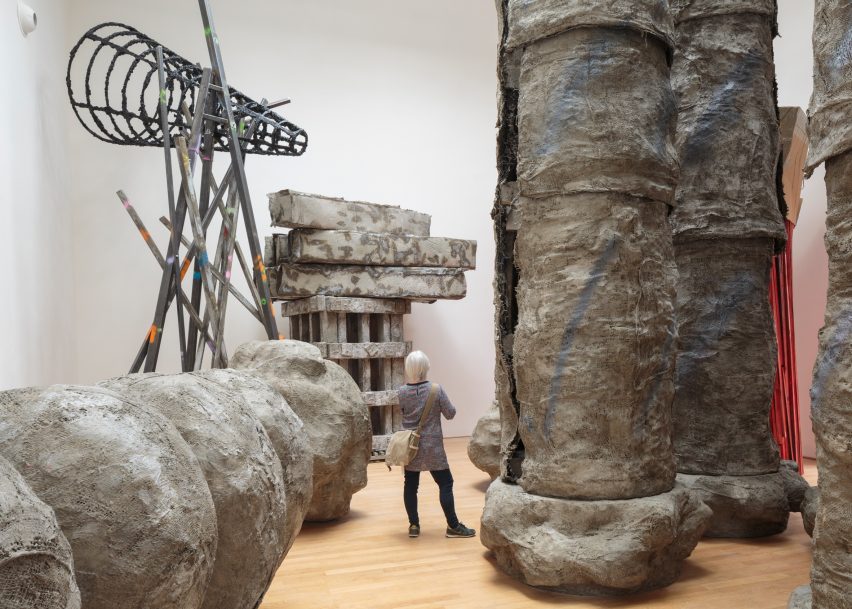
12 must-see installations and exhibitions at the Venice Art Biennale 2017
With the 57th edition of the Venice Art Biennale now open to the public, managing editor Olivia Mull selects some of the best design-led exhibitions, spatial installations and pavilion takeovers.
The Venice Art Biennale is the world's biggest and oldest art festival – and the model on which all biennales are based.
Started in 1895, the festival has outgrown its two main venues – the Arsenale and Giardini. Now exhibitions, installations and national pavilions spill out of palazzos, squares and churches across the Italian city, many of which are usually closed to the public.
This year's biennale runs until 26 November and is supported by watch brand Swatch. It was curated by Christine Marcel of the Pompidou Centre under the title Viva Arte Viva, which she describes as "a biennale designed for artists, by artists, with their practice in the centre".
However artists, curators, architects, designers, musicians and refugees have all collaborated on works for this year's show. They range from architectural installations to spatial performances, covering topics embracing all aspects of life and society.
Read on for our guide to 12 that are not to be missed:
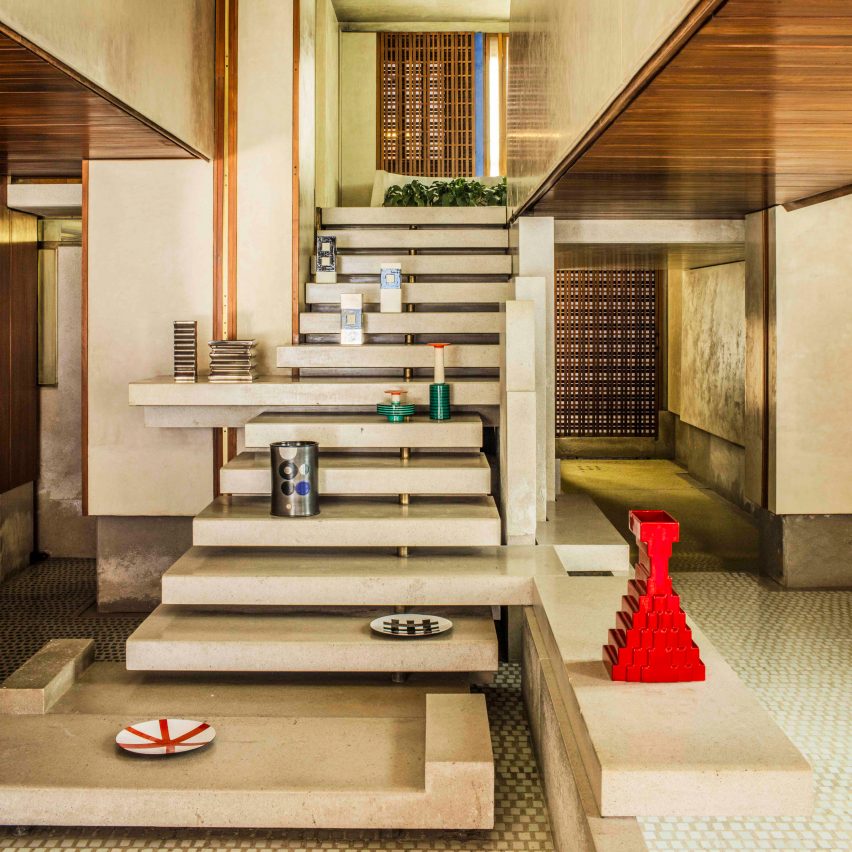
Dialogo: Ettore Sottsass and Carlo Scarpa
Olivetti showroom, Piazza San Marco
An exhibition of Milanese designer and Memphis group founder Ettore Sottsass' little-known ceramics is on display at Olivetti's Venice showroom, which was renovated by Venetian architect Carlo Scarpa in 1957. Curated by collector Charles Zana, the show sets up a dialogue between the work of the two Italians.
Seventy pieces – created by Sottsass between 1957 and 1969 – are positioned throughout the two-storey space. Three 1.5-metre-tall coloured totems stand in the shop front, while smaller geometric vases sit on the sills of lens-shaped windows.
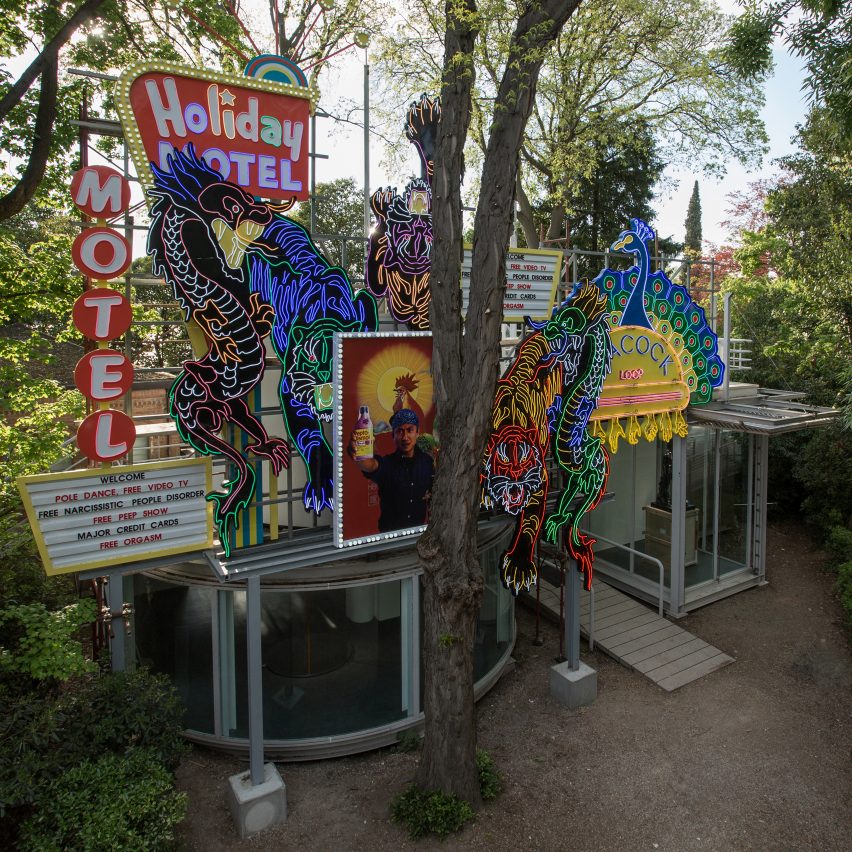
Counterbalance: The Stone and The Mountain by Cody Choi and Wan Lee
Korean Pavilion, Giardini
A collection of garish neon signs complete with phrases including "Free Orgasm" and "Major Credit Cards" cover the roof of Korea's national pavilion as a reference to the casinos of Las Vegas and Macao. The piece – titled Venetian Rhapsody – was created by artist Cody Choi to reflect on the "spectacle of global capitalism".
Artworks by Choi and fellow Korean artist Lee Wan fill the inside of the pavilion, all of which explore Korean identity through personal stories. Pieces include the vast archive of deceased Korean journalist Mr K and a wall of 668 clocks, moving at a rate determined by the amount of time it takes for individuals to earn a meal.
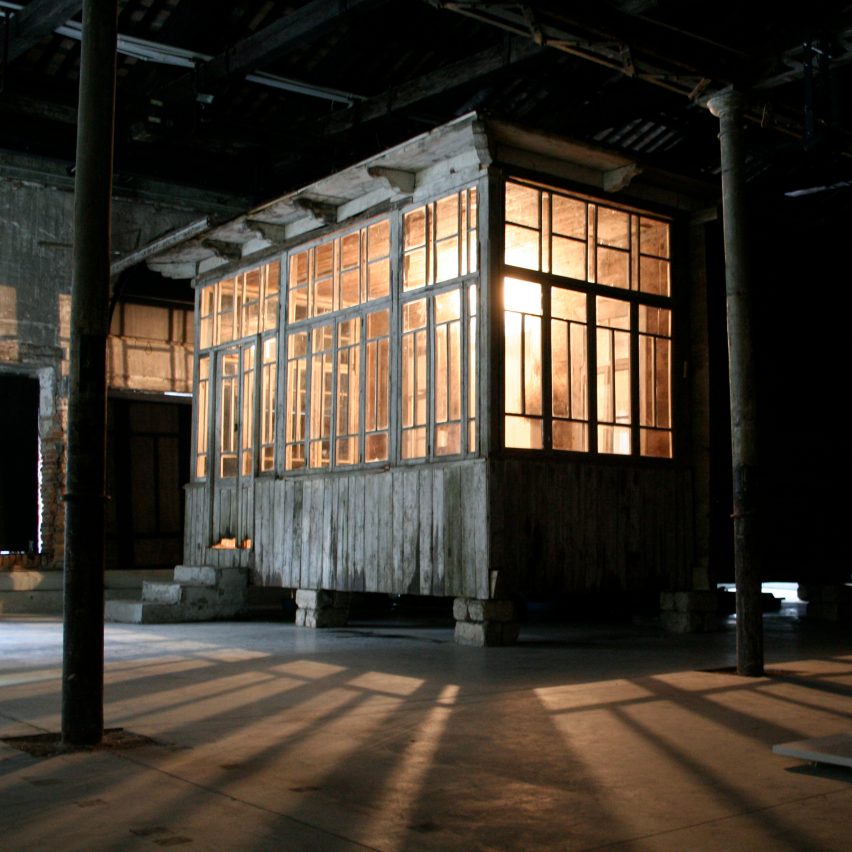
Living Dog Among Dead Lions by Vahjiko Chachkhiani
Georgian Pavilion, Arsenale
This year's Georgian Pavilion takes the form of small abandoned wooden hut, found in the Georgian countryside and reassembled by artist Vajiko Chachkhiani on-site. Furniture, pictures, lights and other household items are the only occupants of the cabin.
Chachkhiani has simulated a never-ending rainstorm inside the hut by puncturing the ceiling with hundreds of holes and installing an irrigation system above. Water puddles on the floor and furniture, and trickles through cracks in the wood. Visitors can watch the interior decay and rot over the course of the biennale, while the exterior of the house will remain untouched.
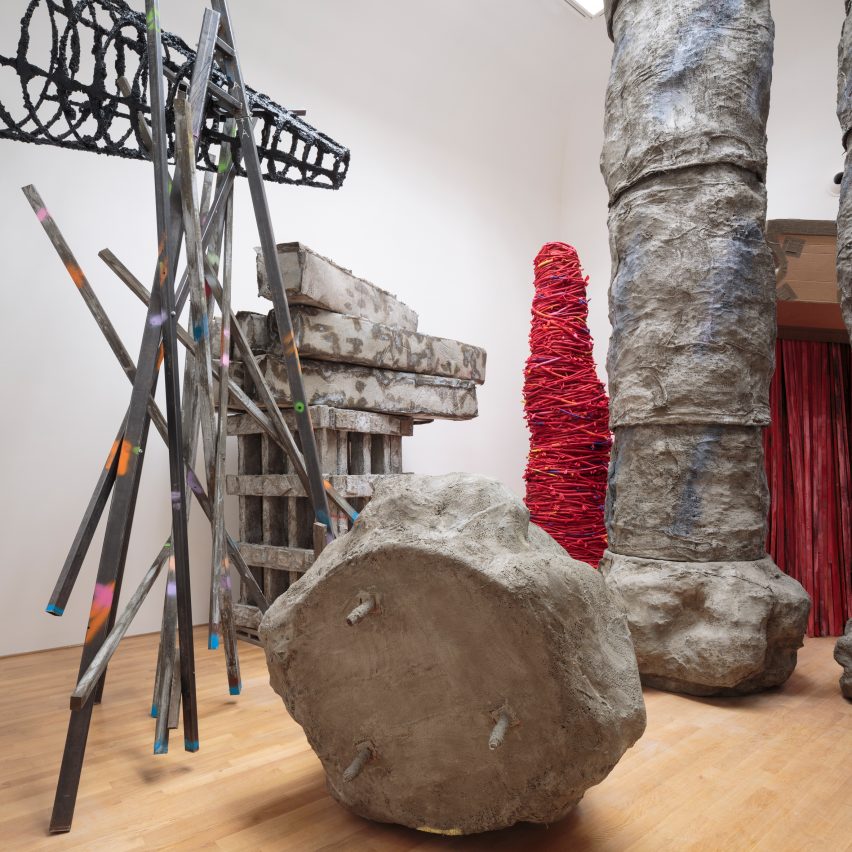
Folly by Phyllida Barlow
British Pavilion, Giardini
Huge bulbous coloured sculptures, skewered on spindly metal stands, cluster around the entrance of the neo-classical British Pavilion. Inside, a forest of grey columns overwhelm the interior of one gallery space while in another, a wall of coloured wooden panels with protruding spikes leans precariously.
Created by 73-year-old British sculptor Phyllida Barlow and commissioned by the British Council, the monumental sculptures are constructed from cardboard, paint, foam, plywood and concrete. They resemble both giant comic toys and theatrical architectural remains.
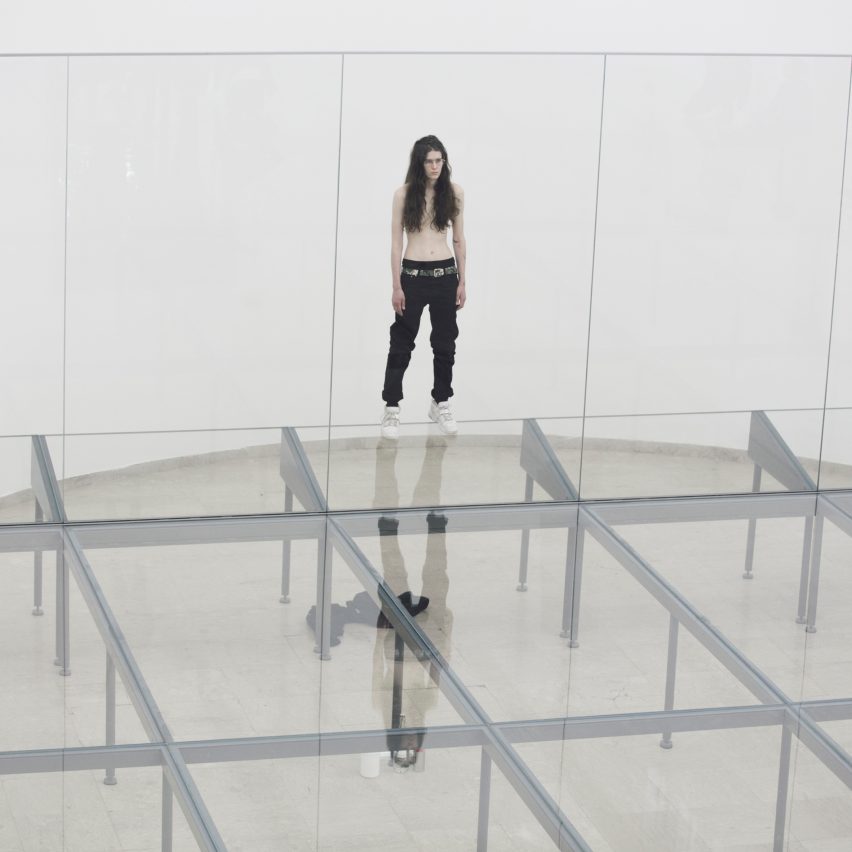
Faust by Anne Imhof
German Pavilion, Giardini
Artist Anne Imhof has transformed the Nazi-era German Pavilion into a hostile stage set for her Faust exhibition. The front entrance has been blocked with anti-riot wire fencing and a pair of Doberman dogs stand guard. Inside, an unnerving raised glass floor spans the white space and glass pedestals jut out from the walls.
At points in the day, groups of young performers dressed entirely in black sportswear occupy the space. They move emotionlessly amongst visitors against a backdrop of harsh metallic music – crawling under the glass floor, dragging their feet and bizarrely embracing.
Undeniably the busiest pavilion, Faust has been awarded this year's prestigious Golden Lion prize. It was described by the jury as "a powerful and disturbing installation that poses urgent questions about our time".
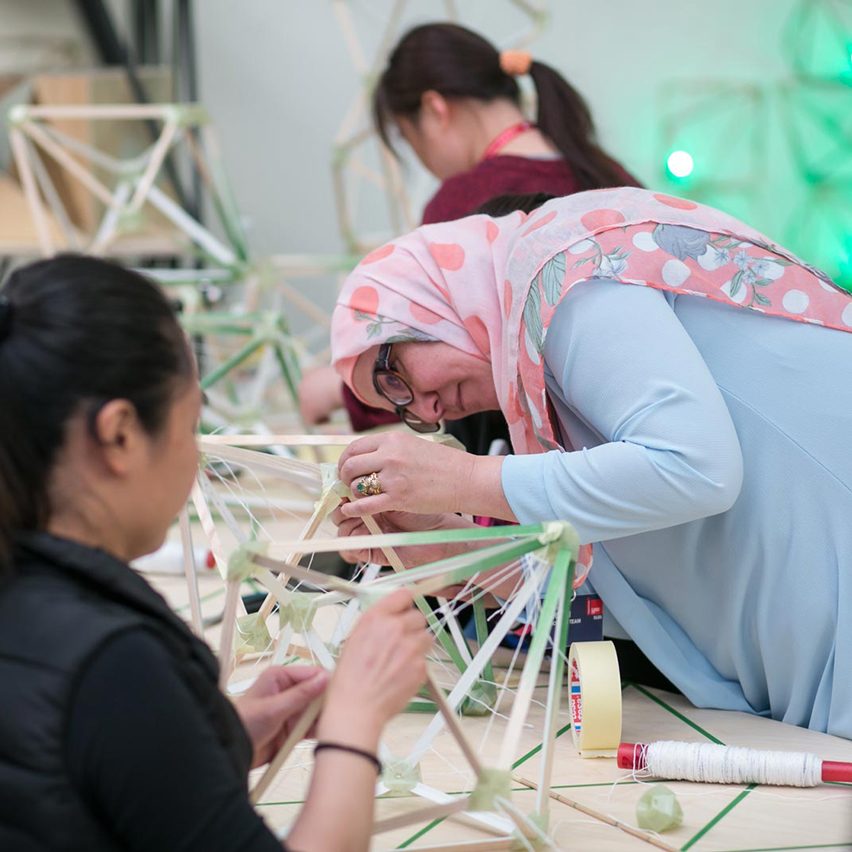
Green Light project by Studio Olafur Eliasson and Thyssen-Bornemisza Art Contemporary
Central Pavilion, Giardini
Berlin-based artist Olafur Eliasson's Green Light is a workshop-cum-studio at the heart of the Giardini's Central Pavilion. It brings together visitors and refugees to make geometric lamps designed by the artist, which are then on sale to raise money for two NGOs. The project is centred around collaboration and conversation, with language courses, seminars and film screenings also being hosted in the space.
Eliasson says Green Light displays a "modest strategy for addressing the challenges and responsibilities arising from mass displacement and migration" – a recurring theme of the whole biennale.
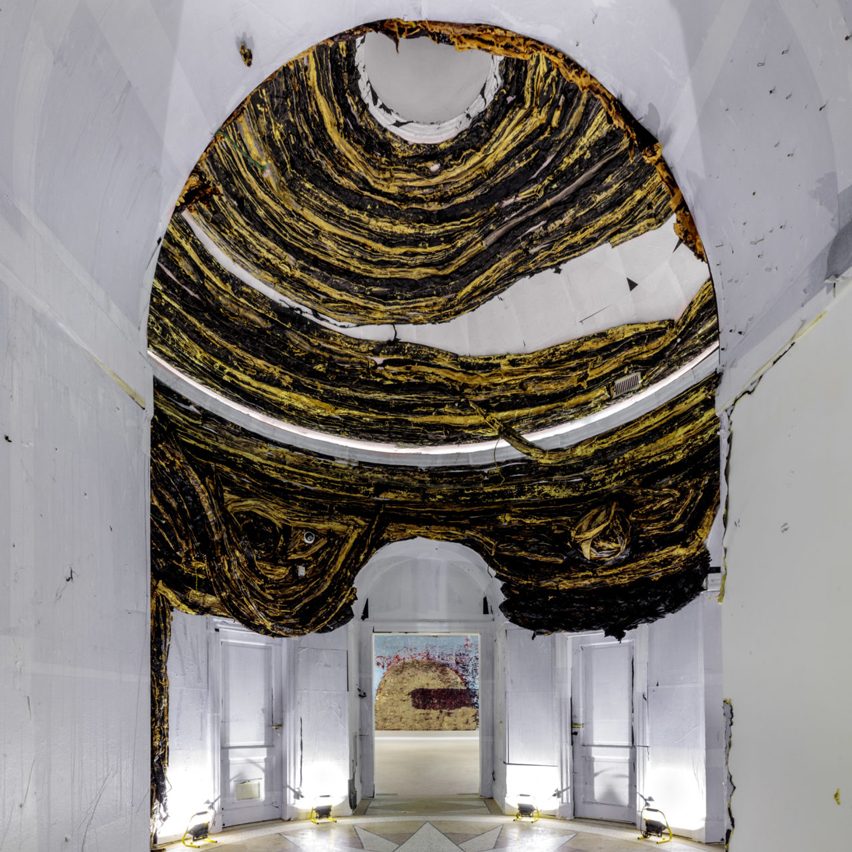
Tomorrow is Another Day by Mark Bradford
US Pavilion, Giardini
American artist Mark Bradford has turned the stately Palladian-style US Pavilion into a ruin. Visitors are greeted by litter scattered across the gravel outside, before entering the pavilion through a side door. The first room has a bulbous red and black mass hanging from the ceiling where it appears to have given way, and the central rotunda now has peeling and patchy walls.
Los Angeles-based Bradford intends for the crumbling pavilion to address the discrimination of black, gay and other marginalised groups, particularly in America today. "I felt like a lot of the progress we've made to be inclusive, to make sure young little trans kids are safe, was gone in the blink of an eye," Bradford said.
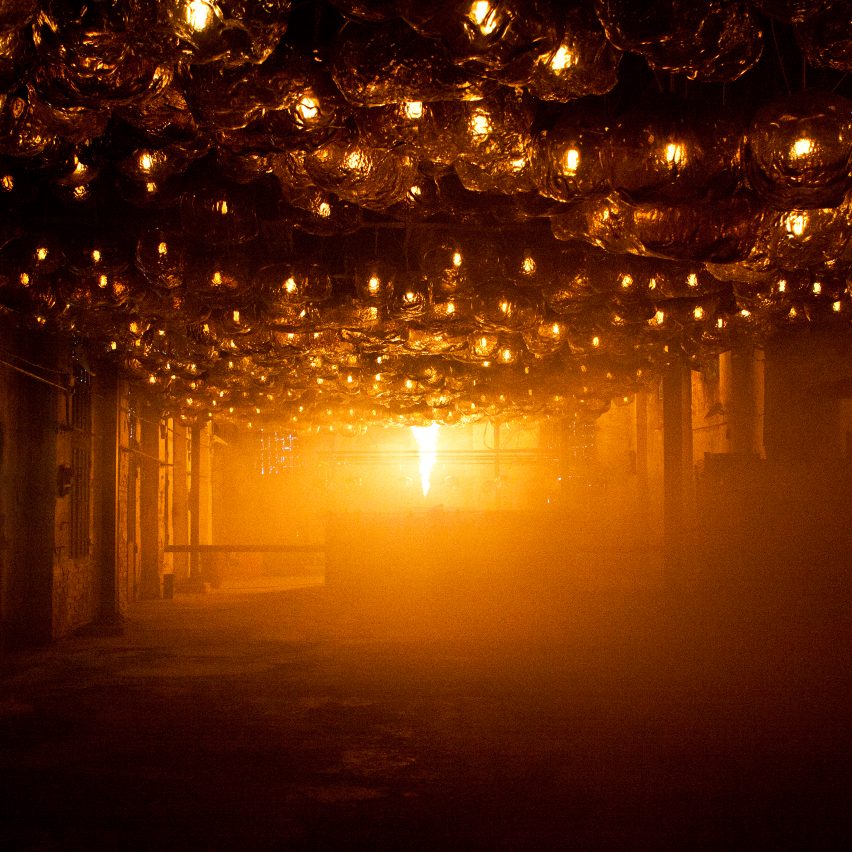
The Unplayed Notes Factory by Loris Gréaud
Campellio della Pescheria, Murano
For this year's biennale, French artist Loris Gréaud has resurrected a disused factory on the island of Murano – Venice's famous centre of glassmaking.
The furnace is transformed into a repetitive and hypnotic production line, with glassblowers working to create up to 1,000 pieces that hang from the roof of the factory. Gréaud describes the immersive exhibition – titled The Unplayed Notes Factory – as a "true tableau vivant".
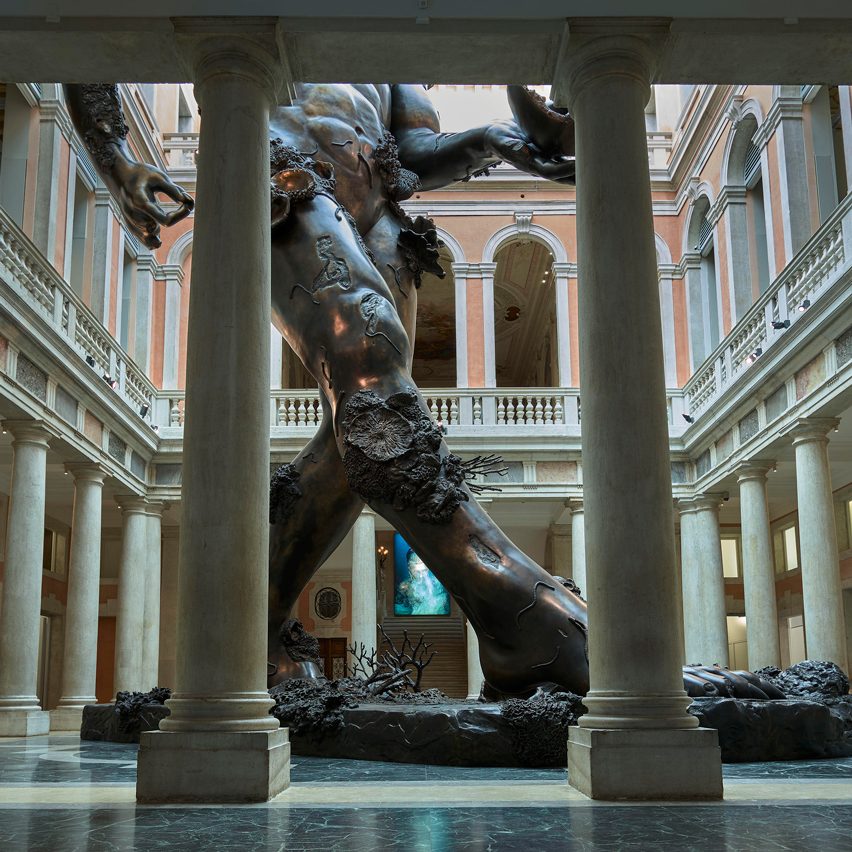
Treasures from the Wreck of the Unbelievable by Damien Hirst
Palazzo Grassi and Punta della Dogana
British artist Damien Hirst's Treasures from the Wreck of the Unbelievable is rumoured to be one of the most expensive exhibitions ever put on by a contemporary artist. The vast show takes over two of the city’s museums – the Punta della Dogana and the Palazzo Grassi – and contains almost 200 new artworks, including 100 sculptures in precious materials such as gold, marble, bronze and crystal.
The objects – the largest of which is a 16-metre barnacle-encrusted decapitated demon in the Palazzo's courtyard – were supposedly lost in a legendary shipwreck 2,000 years ago and rescued from the sea by the Turner Prize-winning artist. Hirst plays with the concepts of reality and originality, claiming the much-discussed exhibition is "all about what you want to believe."
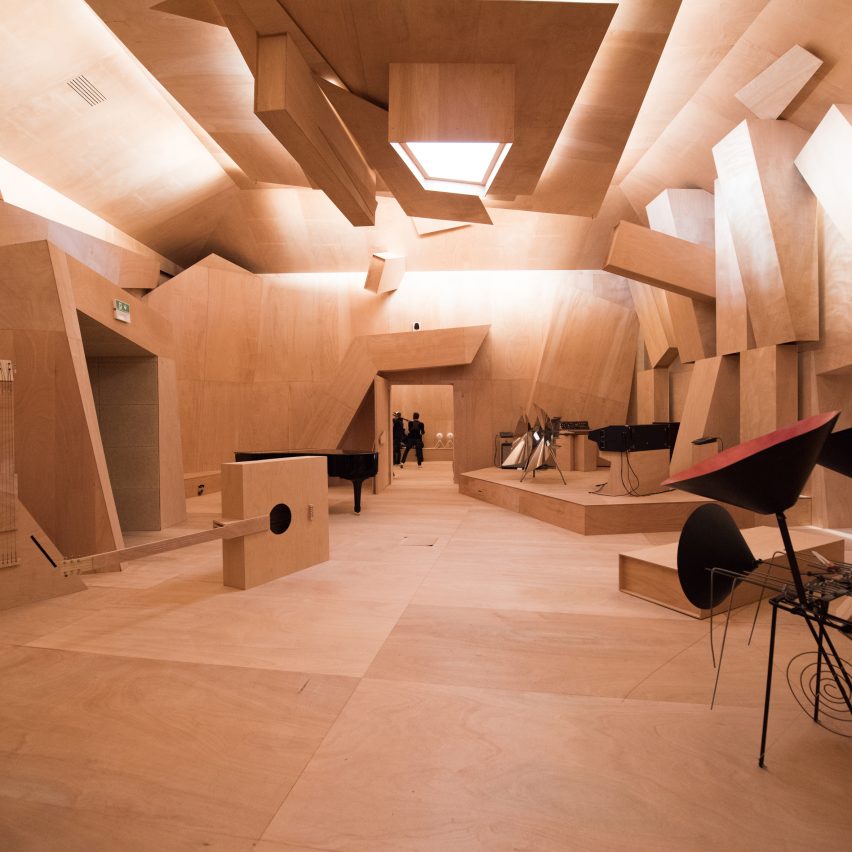
Studio Venezia by Xavier Veilhan
French Pavilion, Giardini
French sculptor Xavier Veilhan has transformed his national pavilion into a working recording studio, putting music at its centre. Veilhan remodelled the interior to create a faceted wooden, soundproofed shell with oversized instruments integrated into the floors.
Over the next seven months, more than 100 musicians – ranging from classical to electronic – will used the studio to experiment and record their work, both solo and in collaboration with other musicians.
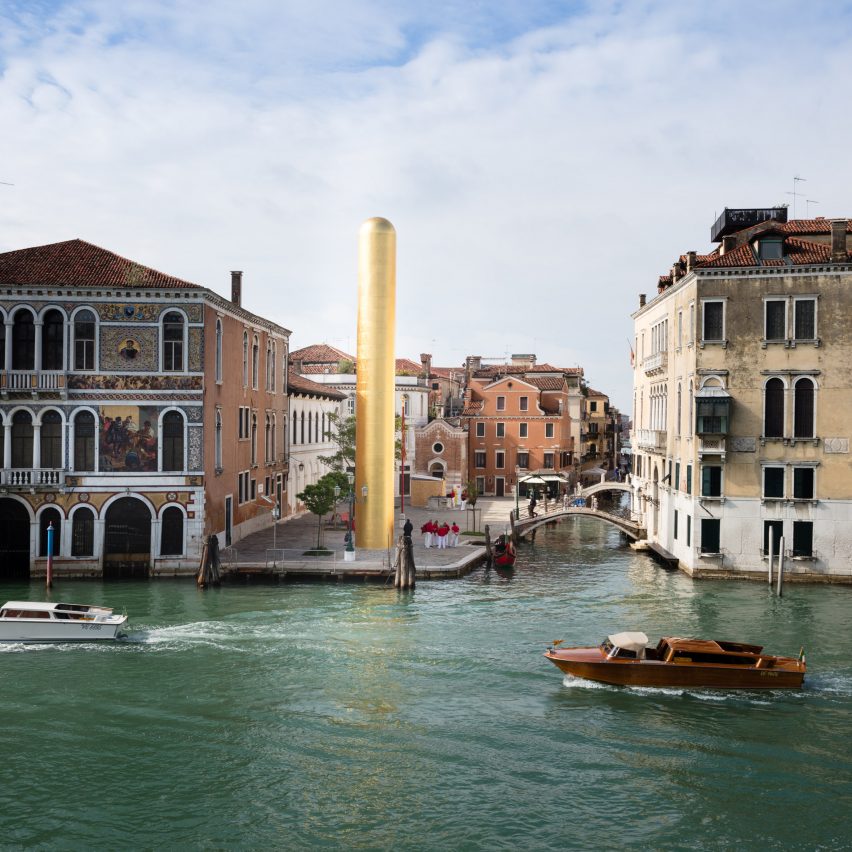
The Golden Tower by James Lee Byars
Campo San Vio, Dorsoduro
A 20-metre-tall golden totem has been erected in Venice's Campo San Vio and will tower over the Grand Canal for the duration of the biennale. The sculpture was created by the late American artist James Lee Byars in 1976 but is being exhibited in a public space – as Byars intended – for the first time.
Presented by Fondazione Giuliani and Michael Werner Gallery, the glowing tower is entirely gilded and took several months to craft. Consequently it is being guarded around the clock, but it can be spotted from across the city.
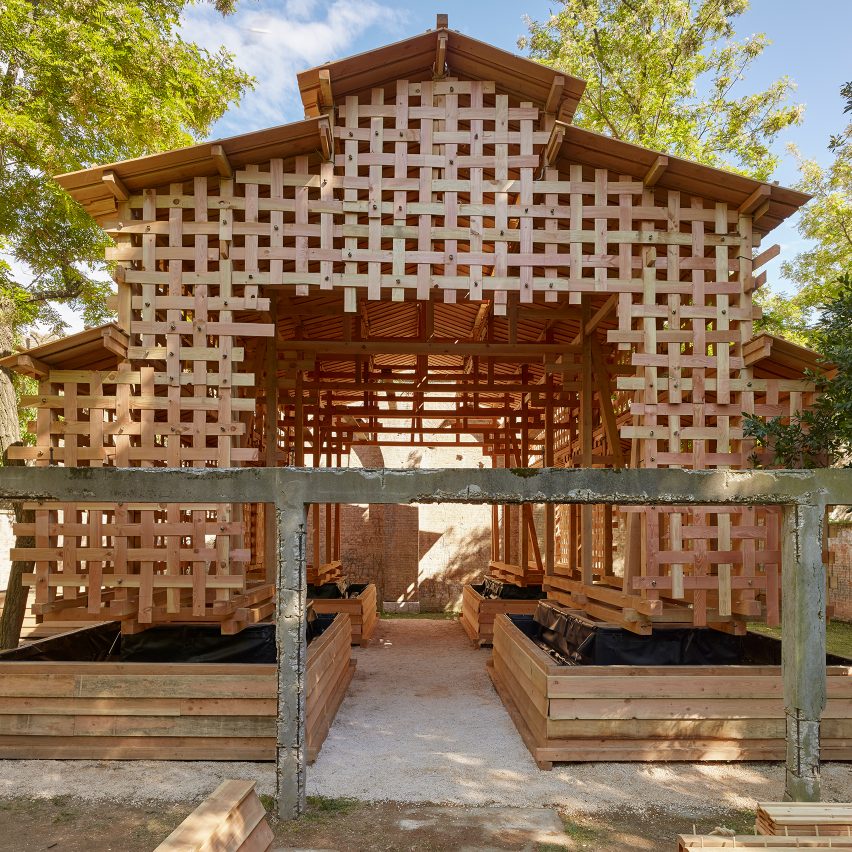
Shipyard by Michael Beutler
Giardino delle Vergini, Arsenale
German artist Michael Beutler's shipyard installation is a salute to the original identity of the Arsenale. The artist has constructed an enormous floating boathouse from Douglas fir using a mixture of traditional European and Asian joinery techniques.
Stacks of wood, piles of offcuts and boards mounted with plans give the illusion of a worksite that has recently been inhabited. The ghostly worksite is located in the walled Giardino delle Vergini, away from the biennale crowds.